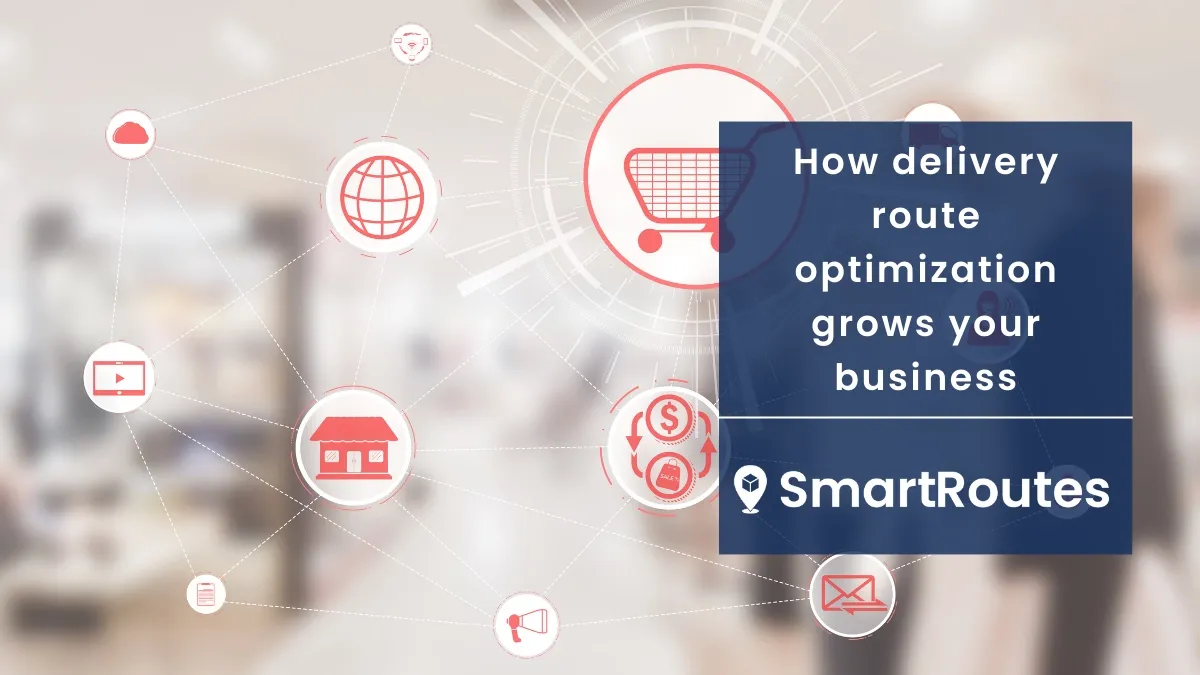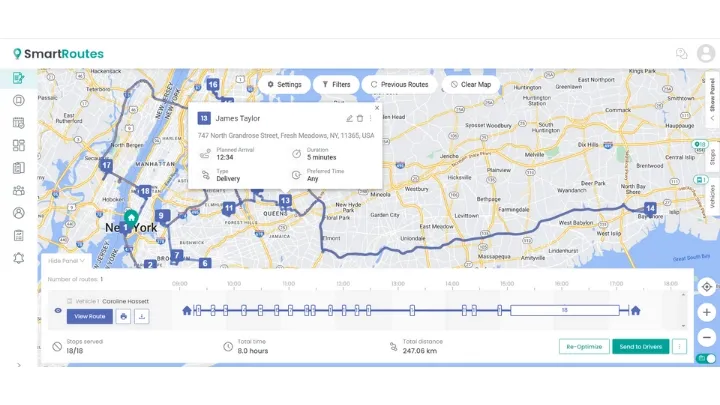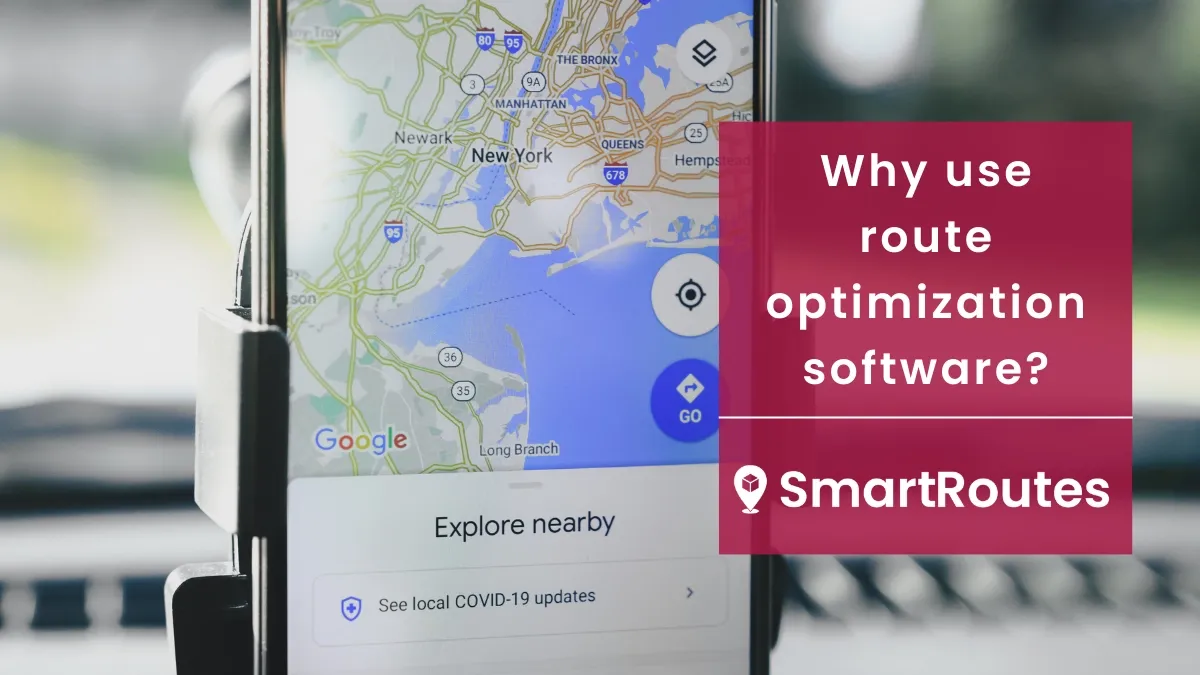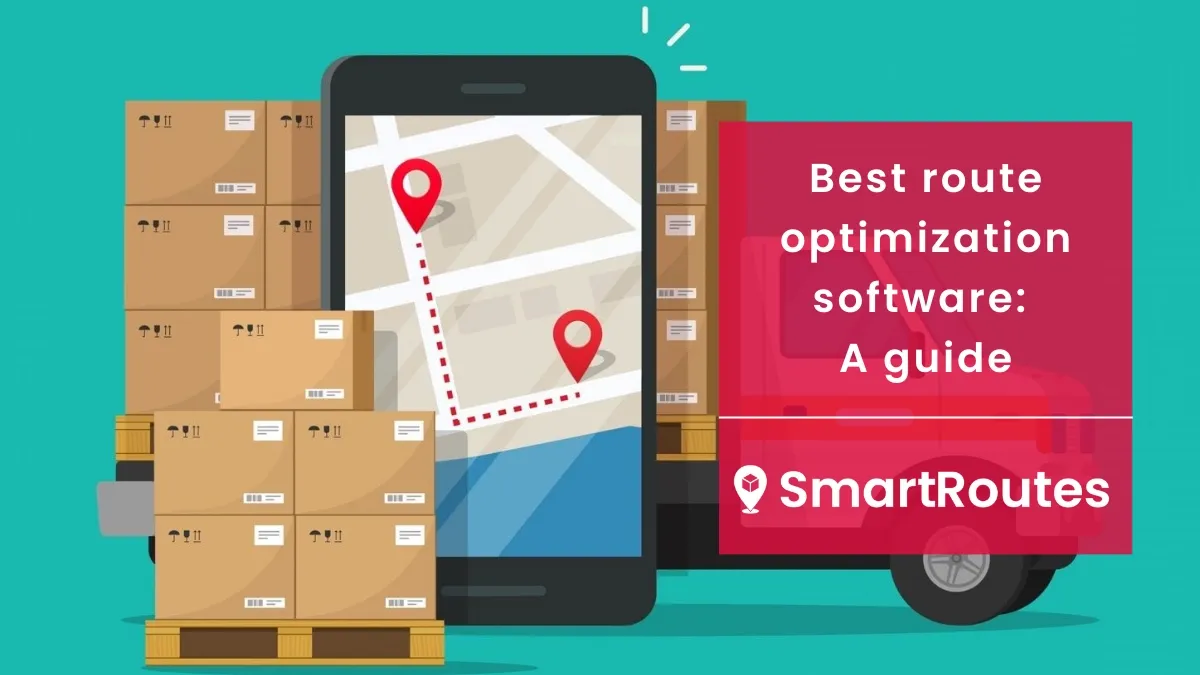How delivery route optimization grows your business
Delivery route optimization takes the difficult job of route planning and simplifies it. In the process you get better tracking and better customer experience.

What is delivery route optimization?
Let’s be honest, route planning for multiple stops is a very difficult task with no right answer. The variables involved in navigating, say 17 stops, run into numbers that you don’t have words for….things like quintillions. When we think about delivery route optimization we think of software’s ability to compute at speed and offer a route to planners that factors in things like traffic conditions but also vehicle size and height, road restrictions, low bridges, avoiding left-hand turns and multiple other factors. The elegance of delivery route optimization is captured neatly in the testimony of one of our customers who tells of how delivery vehicles all arrive back to depot at the end of the day within 10 minutes of each other. In the past vehicles returned at all times of the evening and drivers were stressed by the uncertainty and the lack of work life balance. Route optimization provides more efficiency in route planning and saves time, but it also provides certainty, dependability and order for the people involved in the delivery process.
Definition of delivery route optimization
Delivery route optimization is managed by a software service that incorporates a route optimizing algorithm. Users input their stops that they want to plan as a route and the software calculates the fastest way to complete the route taking into account multiple factors like distance, traffic conditions, vehicle restrictions and many others.
SmartRoutes Route Planning Software
Streamline your entire delivery process, all from one platform

Delivery route optimization takes route planning to the next level by maximizing the number of deliveries along a route in the shortest amount of time possible. By optimizing routes, shippers can increase the number of deliveries done per day, a critical capability in today’s eCommerce environment. Delivery route planners for Shopify, for example, save eComm businesses the headache of outsourcing delivery to expensive third party couriers.
Traditionally, a dispatcher or manager plans the routes drivers will take for scheduled deliveries in order to deliver as many orders as possible, in as short a time as possible. As order volumes and drivers increase, the logistics become more complex. This becomes even more complicated when on demand (same day or next day) delivery is taken into consideration.
Whether in the form of a route planner app or as part of a larger logistics solution, automated route optimization is the digital answer to manual route planning and a standard requirement today for engineering faster and better routes.

Why you need automated, real-time route optimization software:
- Improve shipper and customer satisfaction by providing accurate quotes at online checkout
- Reduce cost to deliver – both by reducing fuel costs and increasing drop density
- scale up delivery operations cost effectively using your existing drivers and fleet
- The right route optimization software can significantly boost drop density and reduce the cost to deliver.
Table of contents
- Benefits of delivery route optimization
- Who uses this type of software?
- What are the variables that delivery route optimization needs to take into account?
- What do your customers think?
- 7 best delivery route optimization providers
- How you can get started
- Five additional things to consider with delivery route optimization
Benefits of delivery route optimization
Lower fuel costs
The less time your drivers spend behind the wheel, the more you save on fuel costs. You might end up getting your drivers to deliver to more stops but either way, the cost of fuel versus the work being done will become more favorable for your business.
Lower maintenance costs
Maintenance costs for your fleet will decrease with fewer hours on the road and will likely allow you to keep vehicles for longer. Another huge benefit is vehicles spending less time in the shop being repaired as a result of wear and tear.
Drivers are happier
Optimized routes mean no more overlap of regions for delivery or getting stuck in unexpected traffic and not getting all their deliveries done. And, of course, happier drivers = happier customers!
It doesn’t always feel like it, especially when you are first implementing route optimization because every driver thinks they know the route better than the algorithm. But drivers who don’t have to think about the route they are taking constantly are considerably less stressed. They have enough on their plates just getting the deliveries done and it is a worry off their shoulders when they know in advance of leaving the depot exactly when they are going to finish their shift that day.
Less manual route planning
Manual route planning is a job best consigned to the dustbin of history. It is time consuming, open to argument and rarely results in the best routes being created. This is evidenced by route optimization software head-to-heads with manual planners, optimization algorithms always win.
Respond to schedule changes in real-time
Things change, that is the nature of last-mile operations. Customers change their delivery, traffic conditions deteriorate, drivers get sick. Changing routes planned at the click of a button is the single best thing about implementing delivery route optimization software. Ask any dispatch coordinator.
Better delivery experience
Delivery route optimization comes with secondary benefits like better tracking of drivers in the field. This then opens up benefits in better delivery experience for your customers including:
- Live package tracking portal for end-customers with vehicle location and ETA
- Customer auto-notifications to give them full visibility on package location and ETD
- Direct contact link between end-customer and driver avoiding need to call dispatch office to get updates
- Geo-fenced auto updates for customers with 30 minute warning of delivery based on driver’s live GPS location
- Contactless delivery or no-contact delivery if requested by the customer or if the customer is vulnerable.
Better business financials
As a result of all the various benefits listed above your business will thrive with delivery route optimization on board. You can deliver faster, deliver more, and have a happier workforce with less driver turnover. All of these things end up in a better bottom line for your business.
Industries that use delivery route optimization software
Industries that are obsessed with delivery route optimization:
- Third party logistics, eg, couriers, last mile delivery operators and so on.
- Manufacturing businesses with large fleets on the road 24/7 such as pharmaceutical companies
- Small businesses with an eCommerce element that requires them to do home delivery
- Grocery and fast moving consumer goods firms where time is critical in moving perishable items through the road infrastructure
- Food delivery businesses like restaurants, healthy meal companies, etc
- Healthcare providers who need to get supplies or medical services to patients in the community
- Anyone who operates a vehicle dropping to more than 10 stops in one day
What are the variables that delivery route optimization needs to take into account?
Anyone who has ever planned out a delivery route manually knows that there are far more variable than just the geographic spread of stops. Not every road is possible for vehicles, certain times of day can be a nightmare in traffic blackspots. But that is only the tip of the iceberg and route optimization algorithms come to the rescue by taking into account a much wider array of factors. Let’s take a look at a few of the variables that need to be considered.
- Number of stops and where they are geographically
- Historic traffic conditions
- Previous routes completed
- Input from experienced personnel and whether they want to ‘fix’ certain parts of the route or specific stops
- Geographic zoning requirements and assignment of zones to certain drivers or vehicles
- Type of vehicle and whether it has restrictions on certain roads because of size, height, etc
- Do we need to avoid tolled roads?
- Left-hand turn/right-hand turn avoidance?
- Skills of different vehicle drivers
What do your customers think?
Surprise, surprise your customers don’t care how difficult delivery routing can be. They only care about where their package is and when it is going to get to them. Research on customer sentiment around delivery is very interesting and shows they want speedy delivery and full visibility including notifications about where their package is at all times. These customer demands need to be factored into the route optimization conversation so you can see how optimization tools can also achieve your customer satisfaction goals. Check out some recent findings from EFT.
7 best delivery route optimization tools
We live and breathe delivery route optimization here at SmartRoutes. We tweak our algo to squeeze every inch of savings out of our software for you, our customers. That being said we aren’t the only algo nerds out there and every provider has different strengths and weaknesses. Here are a list of the seven best optimization tools for your fleet management.
SmartRoutes - Delivery management software
Badger Maps - Big and small fleets
RouteSavvy - Small to mid-sized fleets
MapQuest - Simple routing, business location
SpeedyRoute - Delivery, timeboxing, simple interface
OptimoRoute - Businesses, mobile workforces
OnFleet - Fleet management
How you can get started
- Think about what you need, is optimization really a requirement? Have you read the benefits list above and feel these would help your business? If this is the case then read on.
- Get started with SmartRoutes for a free 7 day trial. Or try out some of the other vendors on our shortlist of best route optimization softwares.
- Compare your existing systems and efficiencies with the trial workflows to see the savings.
Five additional things to consider with delivery route optimization
How to Choose the Right Vehicle Routing Software?
Choosing a vehicle routing software is simple. It comes down to a mix of functionality versus price. The higher the price, the greater the feature set generally. First you need to checklist the feature items you really require and the ones that are nice-to-have. Features that are common include file uploads, proof of delivery, customer notifications, fleet tracking and so on. Once you have narrowed down the list of vendors with your required functionality [you can start with the list of vendors above or from an online directory like Capterra] then you just need to compare prices and ensure support is provided for your team during implementation phase and beyond.
How Does a Routing App for Delivery Drivers Enhance Customer Experience?
When drivers have a delivery routing app they can do a lot of things, they can capture proof of delivery and drivers notes easily, they can see dispatch notes and they can communicate directly with customers by phone or SMS. Of course, they can also get to customers quicker as they will be following the fastest possible route. The fact that a driver app is in their hands means that they have GPS tracking on which opens up some other things that improve the delivery experience. It means SMS notifications can be triggered when the driver is, say, 20 minutes away, or it allows the customers to view the vehicle on a live map to see exactly where they are in relation to that person. Driver apps are the key piece of infrastructure in modern last-mile operations.
How Can a Route Mapping Software Improve Logistics Visibility?
Like we mentioned above, GPS driver tracking means every delivery vehicle is tracked on a live map. The dispatch team can now see where every vehicle is and whether they are on-schedule or have veered off the nominated route. Visibility means you can see what customers or stops might not be profitable to service and it can highlight overlapping routes that could be better carved up territorially. It also allows managers to export and pull reports from field operations based on real data, not just instinct. As they say, information is power and the visibility of field operations with route mapping software is, at its simplest, just data.
What are the Challenges in Deploying Routing Software?
Routing software affects many aspects of the delivery operation. It requires drivers to be on-board with the change and it reveals operational deficiencies that can be painful for management to address. From a technical perspective routing software is certainly a straightforward implementation but it does require some technical management, particularly if it is integrating with existing systems or databases. If you have any questions or concerns about deploying a routing software then talk to us first and we can help you assess what is required.
How Can a Delivery Route Planner Improve Fleet Management and Productivity?
Simple, a delivery route planner is about two things, bringing efficiency to routes required to get deliveries done, and gaining visibility into fleets in the field, where they are, what they are doing, what they could be doing differently. Productivity naturally increases when efficiencies are found and fleet management can be radically improved when you can see your vehicles in the field. We have seen fleets reduced in size as a result of insights from delivery route planners and we have seen huge increases in stops serviced as a result of greater efficiency.
If you would like to talk about route optimization, delivery planning or anything last-mile then you can get in contact with us today and we will set you up with an expert to assess your situation.
Frequently asked questions
1. What is delivery route optimization, and how does it work?
Delivery route optimization is a strategic process that involves finding the most efficient routes for delivering goods or services to customers. It utilizes advanced algorithms and software to analyze various factors like traffic, delivery windows, vehicle capacity, and customer locations. By optimizing routes, businesses can reduce travel time, save fuel costs, and improve delivery efficiency.
2. Why is delivery route optimization important for businesses?
Delivery route optimization is crucial for businesses because it helps reduce operational costs, increase productivity, and enhance customer satisfaction. By minimizing travel time and fuel expenses, companies can allocate their resources more effectively, deliver products or services on time, and ultimately grow their bottom line.
3. What are the key factors to consider when implementing route optimization software?
When implementing route optimization software, it's essential to consider factors like scalability to accommodate your business's growth, real-time tracking for better visibility and control, integration capabilities to seamlessly integrate with your existing systems, and ease of use for your team members to adopt the solution effectively.
4. What industries can benefit from delivery route optimization solutions?
Various industries can benefit from delivery route optimization, including e-commerce, logistics, food delivery, field service, healthcare, and more. Any business that relies on transportation and deliveries can optimize their routes to save time and resources, ultimately leading to business growth.
If you enjoyed this blog, you might also be interested in:







